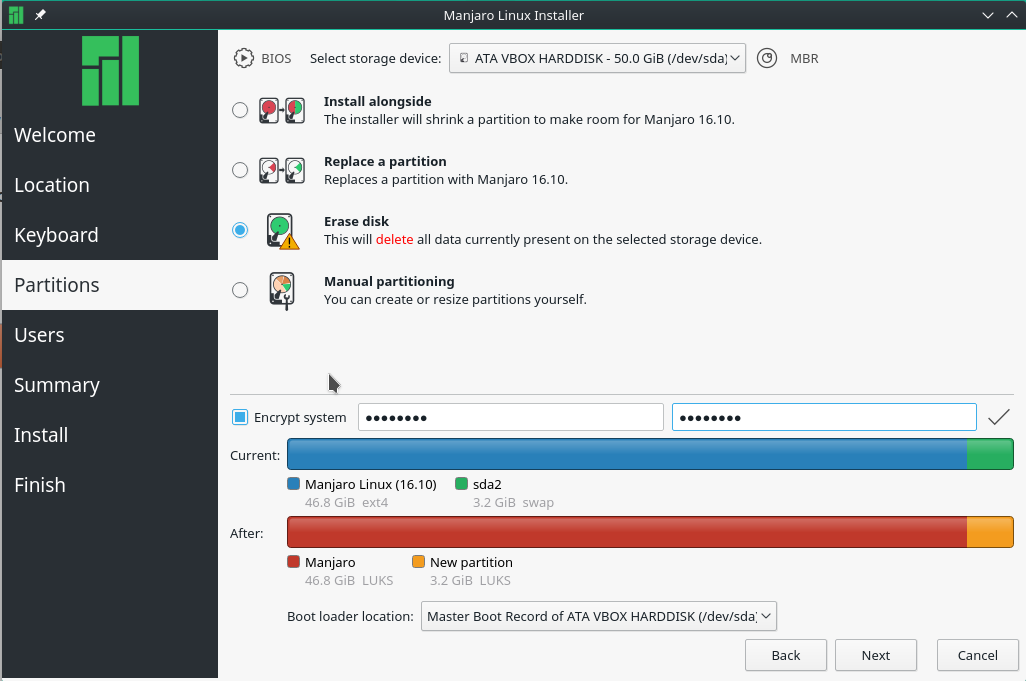Yes. LUKS not only supports passphrases, but keyfiles as well. You can have it automatically load the keyfile (to unlock the container) at boot time. For the system/root partition it’s done via mkinitcpio.conf, and for the remaining partition it’s done via crypttab.
Fairly straight forward now. The installer even has an option to do full disk encryption (but it will use the entire disk, so any data or OS currently stored on it will be irreversibly wiped.)
It’s one of the options in the Calamares installer. The checkbox is named “Encrypt system”.
